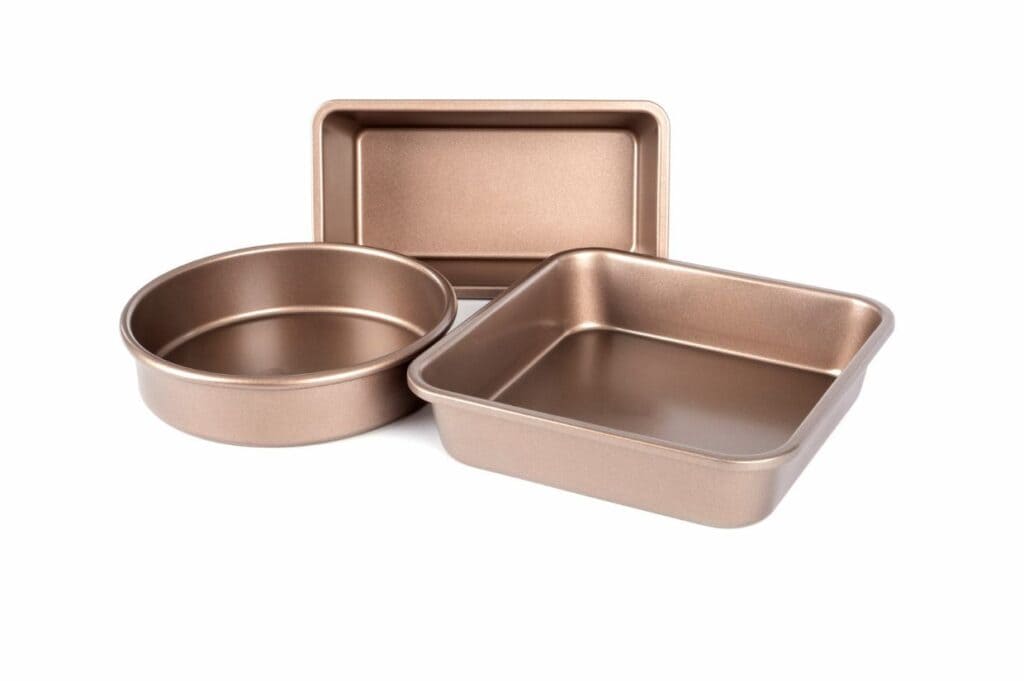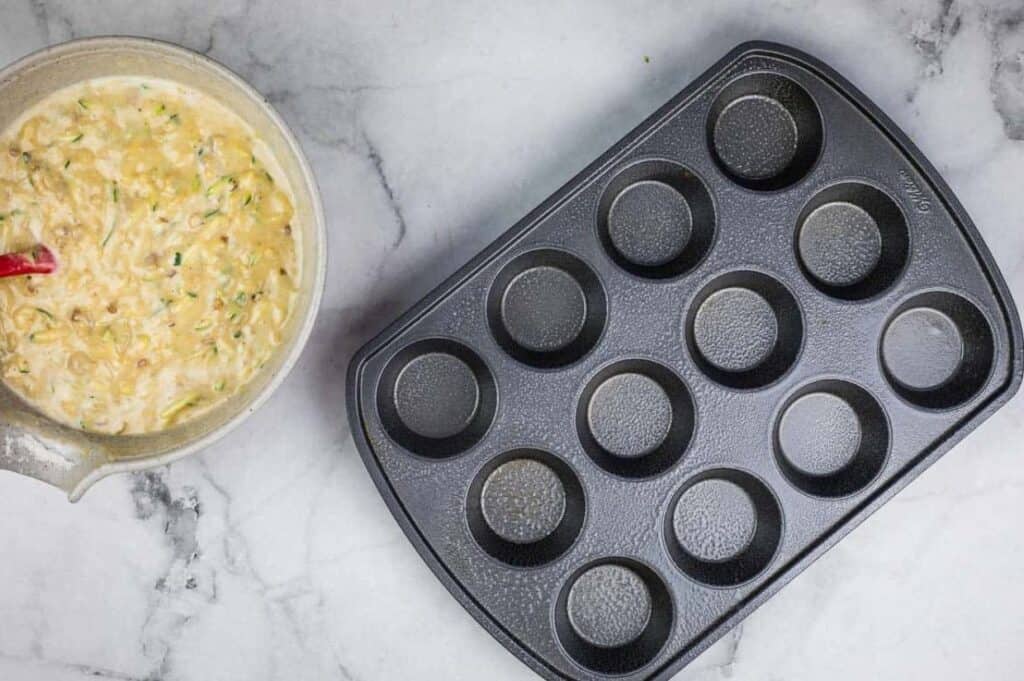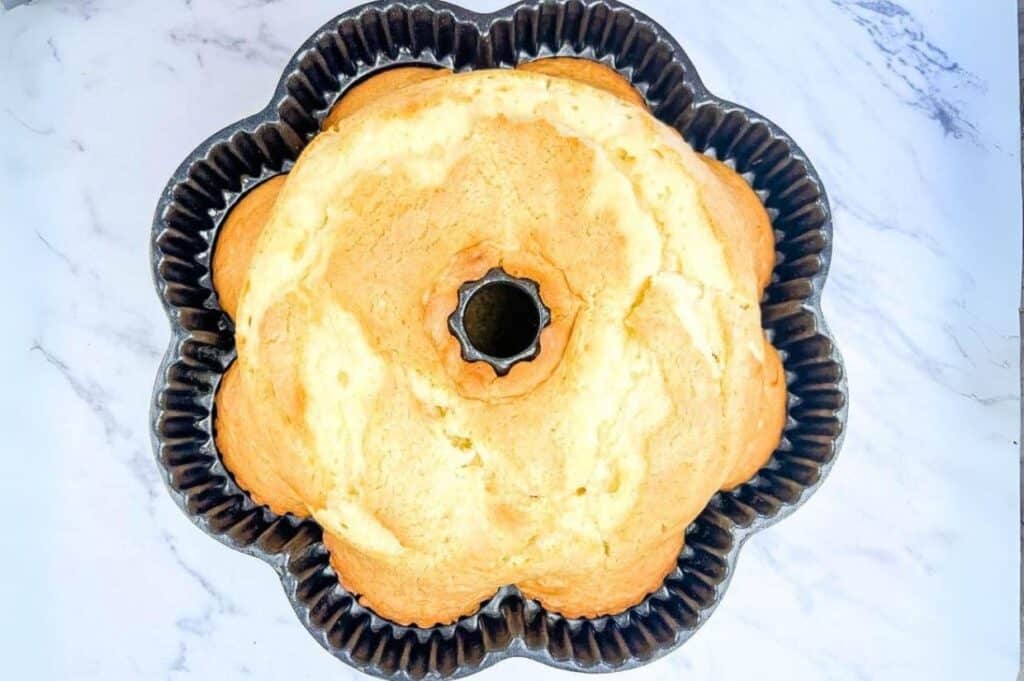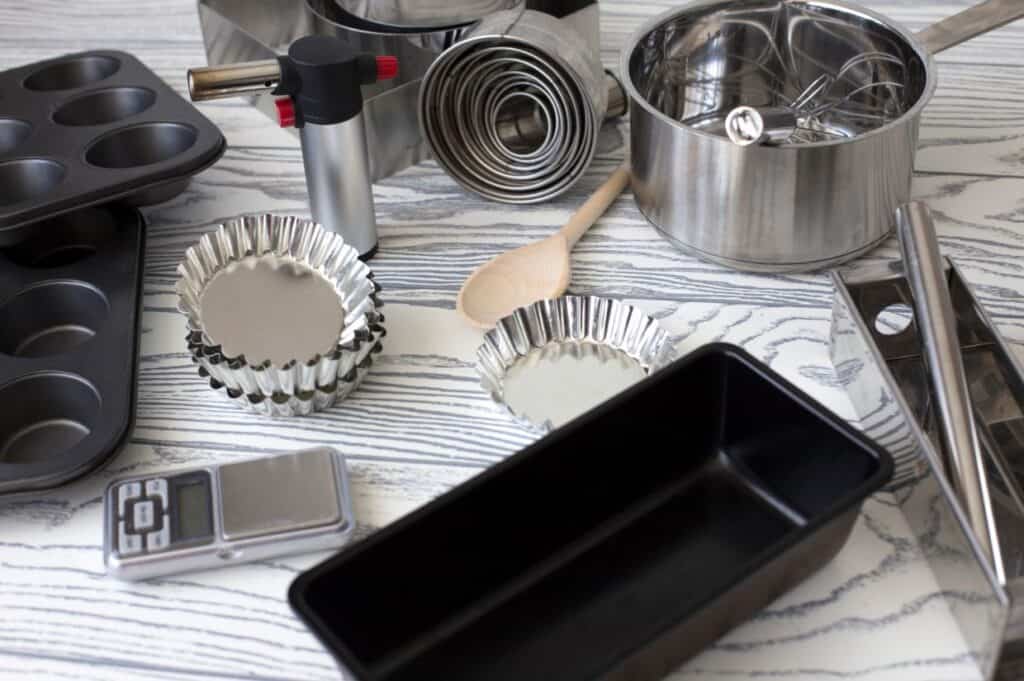Baking pans have been a staple in every baker’s kitchen, from loaf pans for baking bread and cakes to sheet pans for roasting your veggies and baking cookies. This trusty bakeware is crucial for whipping up sweet and savory dishes, making it the MVP of your kitchen.

Whether you’re a baking noob or a self-proclaimed chef, knowing how to use baking pans is essential for your culinary journey. Read on to learn the different types of baking pans, the tips for taking care of them and choosing the right pan for your favorite recipes.
Different types of baking pans
Before the advancements of metallurgy, early human civilizations used heated stones and natural shells to boil water and cook. This then evolved into using pots and metal cookware, and by the 17th century, widespread use of different kitchenware made of brass, copper, steel and aluminum emerged.
Since then, various pans, dishes and gadgets have been invented to help with every recipe, whether for making cakes, pies, bread and other baked goods. Knowing which type to use in your recipes can help kickstart your baking adventure.
Muffin pans
Muffin pans come with six or 12 and sometimes more muffin cups so you can whip up a batch of your favorite muffins in no time. These are a must-have if your mornings start with homemade muffins or if you want a sweet cupcake with your afternoon coffee. Their individual-sized portions and usual non-stick coating will save you from the horrors of lopsided baked goods, which means more time dreaming about chocolate chip cookies.

Loaf pans
Sometimes called a bread pan, a loaf pan is a specialized pan that turns dough into sandwich-ready slices. With its long, rectangular shape, this unique baking pan is perfect for making apple fritter bread, meatloaf or pound cakes. Forget about crusty pieces — with a loaf pan, every slice is a center slice.
Cake pans
A rectangular cake pan is perfect for whipping up fudgy brownies and fluffy cakes. This pan also provides a decent space for baking a lemon drizzle cake and a chocolate brownie. But if you’re looking for something to help you with layering, go for a round cake pan to turn your chocolate fantasies into reality. They come in various sizes, but good starter pan sizes are 8×8 and 10×10 inches.
Bundt pan
If a round cake pan is too ordinary for your creativity, the Bundt pan is a special cake pan that can fuel your next baking challenge. With its ring shape and sloped sides that retain moisture, it’s ideal for dense, moist cakes like coffee and pound cakes. Bundt pans often mean quicker cooking, with its hollow tube in the middle that allows the hot air to circulate.

Pie plate
Also known as a pie dish or pie pan, a pie plate offers the perfect edge-to-center ratio, allowing you to produce a supreme crust coverage for your apple pies in autumn, pumpkin pies in Thanksgiving and chocolate pies just because. Look for a good glass or ceramic pie plate to hold in the heat while baking. This versatile bakeware ensures even heat distribution and ease of serving.
Sheet pan
Sheet pans are the workhorse of your kitchen. This culinary chameleon showcases a multi-tasking feature that knows no bounds. From roasting veggies at 400 F to cooling down chocolate overload cookies, the sheet pan adapts to your savory or sweet whims easily, making it the champion of your bakeware collection.
Pro tip: Look for sheet pans with raised sides. Cookie sheets have no raised sides, which isn’t good for baking anything with liquid.
Proper baking pan maintenance
Like every kitchenware, your baking pan endures the constant battle against heat, batter and sticky glazes. It will require regular care and maintenance to ensure longevity. You want to ensure you do the right things so your baking pans will remain in good shape for as long as possible.
How to clean
Do you still plunge your baking pans into an icy bath after they emerge from the oven? It’s time to stop that habit now. Allow your pans to cool down gently after every use. Subjecting it to extreme temperature changes will leave it cracked, warped or shattered.
Wash your baking pans with a mild dish soap, and avoid detergent. Use a soft sponge or cloth to scrub your pan gently. Wire or steel scrubs and harsh cleaners like bleach can permanently damage your baking pan’s surface.
Drying your pan right after washing ensures you’re not inviting any unwanted rust to the celebration. You can also pop the pans into a still-warm oven to ensure they’re dry. Even a speck of water can lead to rust, and you certainly don’t want to serve a rust-colored chiffon cake at the dining table.
Bakeware cleaning hacks
Light and even is the mantra when using cooking spray on your baking pans. Excessive use of cooking spray can be harsh on the delicate surface of your nonstick pans, breaking the coating and shortening its lifespan. Use a thin layer of oil after the pan is clean and dry to keep it looking new and shiny. Think of it as a spa day for your pan.

Always remove leftover crumbs when dealing with non-stick pans as they can burn your pan’s surface with each use. Try using a rubber spatula, gently working around the sides to loosen them, and carefully flip them out.
Combining baking soda and peroxide can be an odd pair to clean your sheet pans, but they work wonders. Sprinkle baking soda on the surface of your pan and spray a generous amount of hydrogen peroxide until the powder is wet. Let it sit overnight then use a plastic scraper to scrape all the baking soda away, and wash the pan in warm, soapy water with a scrubby sponge.
How to choose the right baking pan
The kind of baking pan you use affects how your recipes will turn out. You want to use the right one for your recipe to avoid run-overs, leaks or ingredients falling in the center. Here are some things you need to consider when choosing your baking pan.
Material
If you’re looking for an efficient heat conductor that will give a beautiful browning effect to your cakes, muffins and brownies, go for metal pans. Glass pans, on the other hand, retain heat that can be perfect for your casseroles and lasagnas. Lastly, silicone pans are flexible with their entirely nonstick surface, great for cakes and muffins, but not best for crispy edges so cookie enthusiasts may prefer to stay with metal pans.
Size
Your pan’s dimensions can determine whether you’ll have a perfectly risen sponge cake or a flatter-than-a-pancake fiasco. Remember, the more surface area you use for baking your cakes, the faster they will bake.
Dark or light pans
Using dark or light pans is a relative discussion in the baking pan world. Dark metal pans absorb more heat and can give a beautiful browning effect, while light-colored pans reflect heat and bake evenly. Choosing which one to use in your recipe can result in a sizzling slice of singed sugar or a pleasant piece of pie.
Become a bakeware pro
Understanding your baking pans is key to culinary success. From the multipurpose muffin pan to the decorative Bundt pan, each piece of bakeware brings its own magic to your creations, whether it’s a perfectly risen cake, crispy cookies or golden-brown veggies.
Jennifer Allen is a retired professional chef and long-time writer. Her writing appears in dozens of publications, and she has two cookbooks, “Keto Soup Cookbook” and “Keto Diabetic Cookbook and Meal Plan.” These days, she’s busy in the kitchen, developing recipes for various publications and traveling, and you can find all her best recipes at Cook What You Love.
This article originally appeared on Bake What You Love.